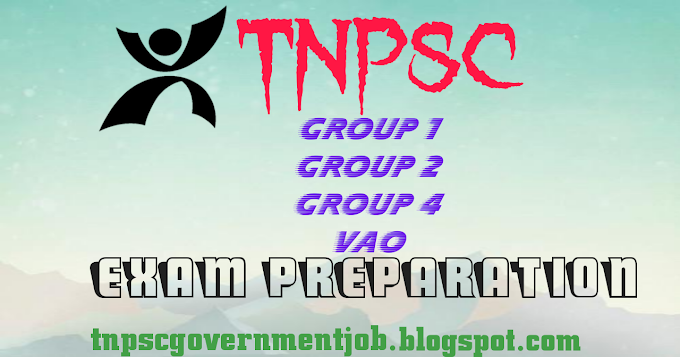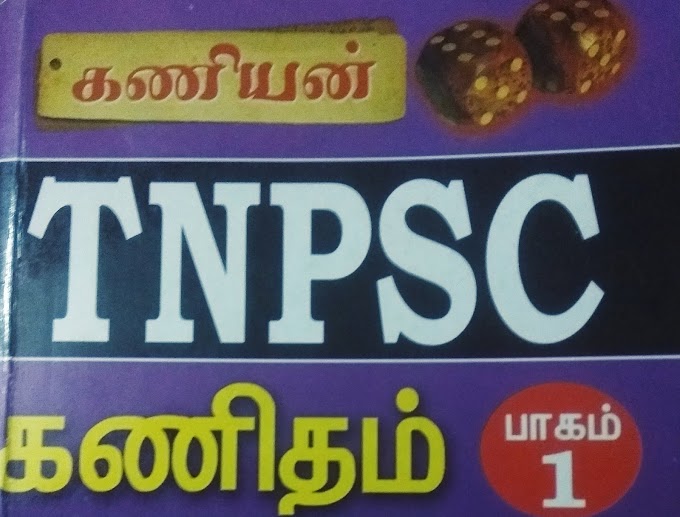PART-II
International Relations
1.)Pakistan’s Economic Crisis
- Pakistan is currently going through a severe balance of payments crisis, the third one in the last 10 years.
- Notably, by the end of June 2018, Pakistan had a current account deficit of $18 billion, nearly a 45% increase from a deficit of $12.4 billion in 2017.
- Pakistan’s economy is passing through a very critical situation. Foreign debt has nearly reached US$95 billion.
- Pakistan’s foreign exchange reserves of around $15 billion are sufficient to cover only two-and-ahalf months of imports.
- Pakistan has approached the International Monetary Fund (IMF) seeking $6 billion financial bailout for averting its balance of payments crisis. An IMF team is currently reviewing Pakistan’s monetary and fiscal policies as well as its monetary needs in keeping with the current account deficit.
- If an assistance package is agreed on, it would be Pakistan's second IMF bailout in 5 years and its 13th since late 1980s.
- Earlier, Saudi Arabia confirmed that it would provide Pakistan with a $6 billion rescue package. However, this aid is not enough to help the crisis-ridden state.
2.)China to Build Port in Myanmar
- After Gwadar in Pakistan and Hambantota in Sri Lanka, it will be third port in India’s neighborhood.
- China is also funding the development of the Chittagong port in Bangladesh.
- China will fund 70 % of the project and the remaining 30 % will be taken up by Myanmar.
- Total China-Myanmar investment into the Kyaukpyu project has been scaled down to $1.3 billion (initial phase) from the earlier $7 billion figure. China’s investment in the project was reduced following Myanmar’s concerns of falling into a debt-trap.
3.)Tension Between Russia and Ukraine
- Russia’s capture of three Ukrainian naval ships and over 20 crew members in the disputed Azov Sea has re-focussed international attention on the conflict on Europe’s eastern corridors. Ukraine has declared martial law and demanded that the sailors be treated as prisoners of war.
- Sea of Azov is a sea in Eastern Europe in the south it is linked by the narrow (about 4 km or 2.5 mi) Strait of Kerch to the Black Sea, and it is sometimes regarded as a northern extension of the Black Sea. Further, the Kerch Strait separates Russia from Crimea, a Ukrainian peninsula that was annexed by Russia in 2014.
- A court in Russian-annexed Crimea, meanwhile, has ordered many of them to be held in pre-trial detention, charging them with illegally entering its territorial waters.
- Ukraine and Russia’s Allegation: Ukraine has alleged Russia of violating the UNCLOS and 2003 Treaty as well as blocking its ports. While Russia said the Ukrainian ships were violating its waters and accuses the Ukrainians of failing to inform it that three of its ships were planning to sail through Kerch. Moscow has also accused Kiev of planning the recent confrontation as a provocation aimed at convincing Western governments to impose further sanctions on Russia. Further, Russia calls the sea clash a provocation organised by Ukraine's authorities in the run-up to the Ukrainian Presidential election.
4.)Visit of Prime Minister To Singapore
- Prime Minister Narendra Modi visited Singapore on 14-15 November 2018 at the invitation of Prime Minister of the Republic of Singapore, Mr. Lee Hsein Loong, to attend the ASEAN-India Breakfast Summit, 13th East Asia Summit (EAS) and Regional Comprehensive Economic Partnership (RCEP) Summit.
- Singapore, as the current Chair of ASEAN, is hosting these Summits.
- Launch of APIX: Prime Minister launched the APIX which is a platform through which the ASEAN financial institutions, innovators and users would connect with the Indian users to begin with but it is finally a global platform in which there will be many more connects.
- Review of CECA: PM of India and Singapore reviewed the relationship and expressed satisfaction that the second review of the Comprehensive economic cooperation Agreement (CECA) has concluded and third review was ongoing.
5.)President Kovind Visit to Vietnam and Australia
- President Ram Nath Kovind visited Vietnam and Australia from November 18 to 24 with an aim to strengthen ties with the Indo-Pacific nations.
- President’s visit is also a part of India’s continuing and growing engagement with countries in the Indo-Pacific region under its “Act East” Policy.
- Areas Of Cooperation (Vietnam):
- The visit is going to be the first visit of the President of India to Vietnam, an ASEAN country.
- President also visited Danang, one of the most important ports in Vietnam. Danang and India connect with each other in rich history.
- Areas of Discussion: The President discussed the issue of climate change, enhanced bilateral cooperation in the maritime domain through first Bilateral Maritime Security Dialogue to be hosted by Vietnam in early 2019, India’s support to Vietnam as it takes over the ASEAN Chair in 2020, promotion of peace and prosperity in the Indo-Pacific Region, acknowledgment of Vietnam’s support for an early adoption of a Comprehensive Convention on International Terrorism at the United Nations,
- Visit Australia :
- This was the first ever visit of President of India to Australia. In Sydney, President addressed the Indian diaspora and unveiled the statue of Mahatma Gandhi marking his 150th Birth anniversary.
- ANZAC Memorial: President Kovind laid a wreath at the ANZAC Memorial and paid homage for fallen soldiers of WWI at Sydney. In the meeting, President conveyed India’s decision to contribute additional AUD 10 million matching funds over the next 4 years towards Australia India Strategic Research Fund.
6.)Indian PM Visit to the Maldives
- Prime Minister Narendra Modi attended the swearing-in ceremony of Maldives President Ibrahim Mohamed Solih to strengthen the bilateral relations.
- Debt Trap: The former President Abdulla Yameen had claimed unprecedented infrastructure development in the island nation, it was largely perceived as being part of China’s “debt for leverage” model, which can used by Beijing to get access to the country’s natural resources as well as for strategic reasons. Experts say Chinese loans for projects already account for around 70 % of the Maldive’s national debt.
- Chinese Presence: The relations between India and Maldives had deteriorated in the last few years with Yameen in power. Yameen’s trampling of democratic processes and his veering towards China had caused considerable concern in New Delhi.
- Peace And Stability In The Region: Modi and Solih, who had a bilateral meeting just after the swearing-in, agreed on the importance of maintaining peace and security in the Indian Ocean and being mindful of each other’s concerns and aspirations for the stability of the region. This is aimed at addressing concerns stemming from China’s assertive activities in the Indian Ocean region.
- Development Aid: Solih briefed Modi on the dire economic situation facing his country and they discussed the ways in which India could continue the development partnership, particularly to help the new government meet its pledges to the people of the Maldives. In particular, President Solih highlighted the pressing need for increased housing and infrastructure development as well as for establishing water and sewerage systems in the outlying islands.
- Investment: Advocating for the Indian footprint to be expanded, India welcomed the expanding opportunities for Indian companies to invest in the Maldives in different sectors for the mutual benefit of both countries
7.)APEC Summit In Papua New Guinea
- The world leaders met in Port Moresby, the capital of Papua New Guinea, for an Asia-Pacific Economic Cooperation (APEC) summit.
- But For the first time in its 25-year history, the APEC summit ended with its leaders failing to agree on a formal joint statement.
- U.S. President Donald Trump is not attending the APEC meeting, nor is his Russian counterpart, Vladimir Putin.
- It is a regional economic forum, established in 1989, to leverage the growing interdependence of the AsiaPacific.
- It has 21 members who aim to create greater prosperity for the people of the region by promoting balanced, inclusive, sustainable, innovative and secure growth and by accelerating regional economic integration.
8.)13th East Asia Summit (EAS) Held At Singapore
- Security cooperation: With the world facing renewed anxieties over nuclear warfare and grappling with the threat of cyber-attacks and terrorism, ASEAN nations and eight of their key partners vowed to step up cooperation in a range of security areas. The members agreed to do more to tackle returning foreign fighters, beef up cyber security and ensure the safe and secure use, storage and transport of nuclear and other radioactive materials.
- Combating Marine Plastic Debris: They also took aim at a problem plaguing the environment i.e. the rise of plastic litter in the oceans, which places marine biodiversity as well as industries such as fisheries, maritime transport and tourism at risk.
- ASEAN Smart Cities: EAS members also recognised that developing a regional smart cities ecosystem will help the region weather challenges arising from rapid urbanization and allow them to harvest the opportunities associated with the ongoing digital and fourth industrial revolution for better economic, social and environmental outcomes.
9.)G-20 Summit in Argentina
- The G-20 leaders, in a meeting at Buenos Aires (Argentina), agreed to fix the world trading system but only 19 of them agreed to support the Paris accord on fighting climate change with the United States the lone holdout.
- The next G20 summit is to be held in Osaka, Japan in June 2019.
- Need for WTO Reform: The official summit statement acknowledges flaws in global commerce and calls for reforming the World Trade Organization.
- No Reference To Protectionism: With trade tensions between the U.S and China dominating the summit, the Europeans sought to play mediator. The members also scaled back their expectations by cutting out mentioning of rising protectionism, mainly aimed at Trump.
- US-China Meeting: During US-China meeting on sidelines of G-20, Trump agreed to hold off on plans to raise tariffs on $200 billion in Chinese goods. Xi agreed to buy a substantial amount of agricultural, energy, industrial and other products from the United States to reduce America’s huge trade deficit with China. The cease-fire will buy time for the two countries to work out their differences in a dispute over Beijing’s aggressive drive to supplant U.S. technological dominance. •
- Views On Climate Change: Regarding climate, the 19 nations that are signatories to the Paris accord reiterate their commitment to it while the U.S. reiterates its decision to withdraw. It also notes a recent U.N. report that warned damage from global warming will be much worse than previously feared and expresses support for an upcoming UN climate meeting in Poland meant to nail down how countries will meet promises made in the Paris accord.
- On Migration: It acknowledged growing migrant flows and the importance of shared efforts to support refugees and solve the problems that drive them to flee.
10.)Kenya Hosts Sustainable Blue Economy Conference
- Kenya is hosting first ever-Sustainable Blue Conference with Canada and Japan as co-host in the Kenyan capital, Nairobi. The theme of the conference is “The Blue Economy and the 2030 Agenda for Sustainable Development.”
- UN Sustainable Development Goal 14 tasks nations to “conserve and sustainably use the oceans, seas and marine resources for sustainable development”.
- The Blue Economy is the economic benefit and value we realize from the Earth’s coastal and marine environment. While the sustainable blue economy is a marine-based economy that provides social and economic benefits for current and future generations, restores, protects and maintains the diversity, productivity and resilience of marine ecosystems and is based on clean technologies, renewable energy, and circular material flows.
11.)Inclusive Wealth Report, 2018
- The UN Environment Programme (UNEP, or UN Environment) and partners released preliminary findings from the ‘Inclusive Wealth Report 2018’ that aims to evaluate and report on a country’s wealth and well-being.
- The Inclusive Wealth Report is a biennial report that ranks 140 countries using the Inclusive Wealth Index, a tool that assesses a country’s ability to look after its wealth in a way that is sustainable and safeguards its future generations.
- The report, curated by more than 200 economists from around the world, focuses on stocks of natural (forests, agricultural land, rivers and estuaries, the atmosphere and the oceans), human (aptitude, education, knowledge and skills) and manufactured capital (buildings, equipment, machines and roads) to measure inclusive wealth as an alternative to using gross domestic product (GDP) as a measure of a country’s wealth, arguing that GDP measures only the size of a country’s economy without considering its underlying asset base.
Online Test Series
Other Related Articles
TNPSC Related Articles







